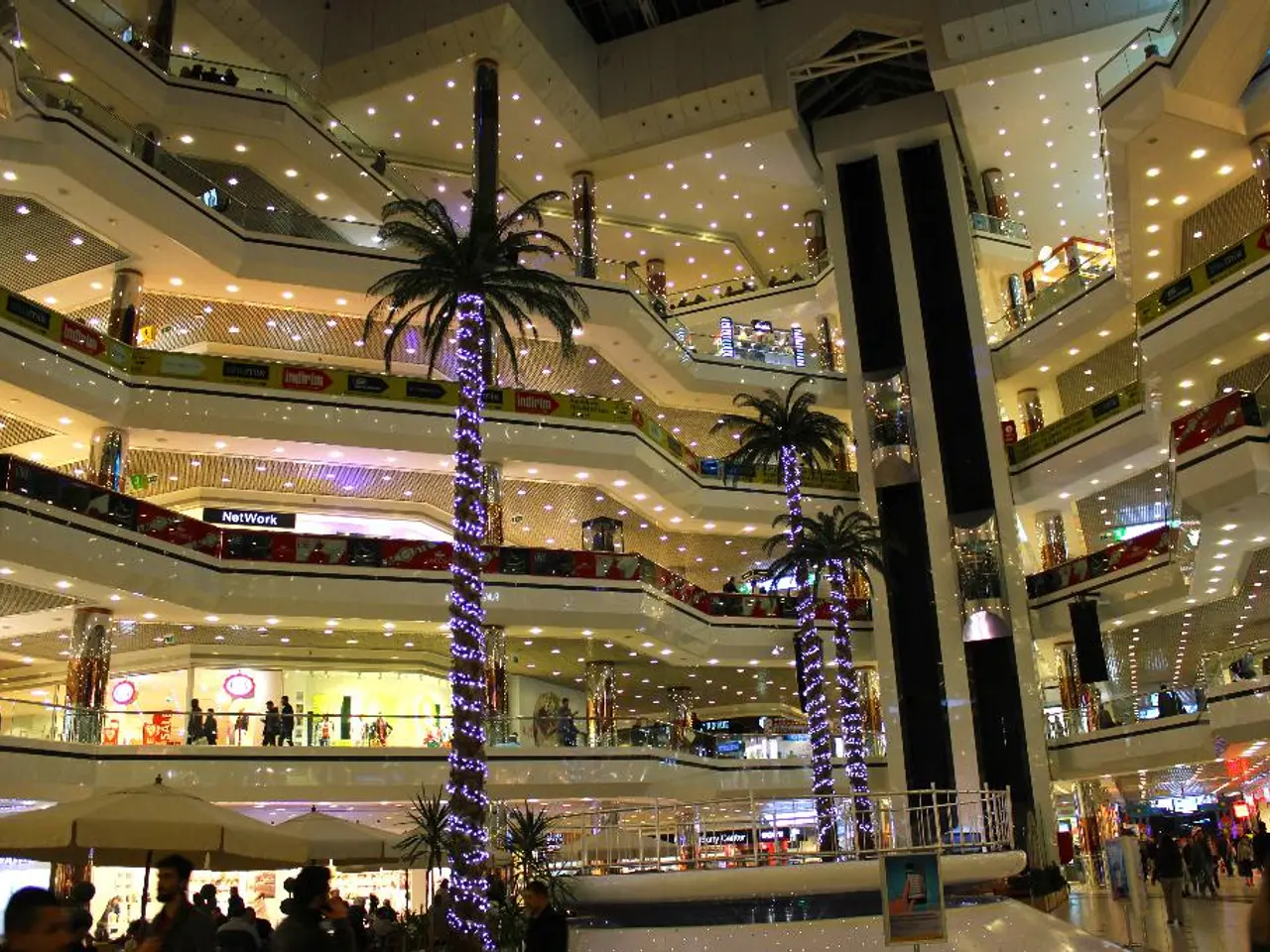Guidelines for Creating a Retail Setup
Optimizing Retail Spaces for Enhanced Customer Experience and Increased Sales
In the ever-evolving world of retail, creating a space that not only attracts customers but also encourages them to make purchases is paramount. Here's how to design a retail space that delivers an optimal customer experience and boosts sales.
Strategic Layout and Space Planning
Understanding customer movement is key to a well-designed retail space. Traffic analysis tools such as foot traffic and heat maps can help identify congestion or low-traffic zones, allowing for aisles and product displays to be arranged to encourage exploration and ease navigation. Intuitive pathways from the entrance, guided by lighting, help customers naturally move through key areas, while placing signature or focal product displays near entry points draws shoppers deeper into the store.
Customer Journey and Experience
Interactive and hands-on product experiences cater to immediate gratification needs and encourage discovery. Personalizing the shopping experience with customer data-driven product recommendations and localized store elements ensures a tailored experience, while respecting privacy. Ongoing customer feedback at key touchpoints identifies pain points, enabling layout optimisation.
Lighting
Lighting serves a dual purpose: visibility and product enhancement. Balancing ambient, task, and accent lighting creates an atmosphere that both illuminates products and improves their appeal.
Merchandising Displays
Visually appealing displays that reinforce brand identity and highlight bestsellers or promotional items are essential. Modular displays offer flexibility for seasonal or localised changes.
Color Scheme and Branding Integration
Brand colours should be strategically applied throughout the store to reinforce brand recognition and emotional resonance. Regional or community-influenced design elements tailor the space locally while maintaining overall brand consistency. Consistent branding across layout, signage, and decor builds customer trust and creates a memorable shopping environment.
Best Practices
Continuous analysis of sales and traffic data refines product placement and store flow for maximum sales impact. Staying current with retail trends and technology keeps the store environment engaging and responsive to evolving customer preferences.
Warm tones make customers feel comfortable, while bright colours energize them. Incorporating brand colours into fixtures, displays, and checkout areas strengthens recognition and encourages loyalty. Labels and signs help customers navigate offerings easily. Lighting plays an important role in a store's atmosphere, with bright lighting highlighting detailed displays or special items, and soft, ambient lighting creating a relaxed atmosphere in certain areas.
Space planning is critical to successful retail design, involving arranging and organizing the space to create a natural and easy flow for customers. Effective visual hierarchy is crucial in merchandising displays, with items at eye level grabbing the most attention. Understanding the customer journey is crucial in designing an adequate retail space, involving mapping out how shoppers will interact with the space, considering their motivations, shopping preferences, and desired experiences.
Using props or themed elements that match the season or your brand can spark imagination in merchandising displays. A smart floor plan encourages customers to discover quieter areas of the store, where high-margin items or newer offerings might be showcased. Good design encourages customers to explore every part of the store, creating separate areas for different products or themes. Using different heights and textures creates visual interest in merchandising displays.
Using multiple light sources allows you to create different moods or themes in the same retail space. Skylights or large windows let in natural light, making the shopping experience feel vibrant and welcoming. Attractive merchandising can turn a simple store into a destination. Using flexible layouts can help as your business evolves, allowing for new merchandising ideas during different seasons or promotions. Combining natural and artificial lighting enhances product displays and makes the space feel open.
- To optimize retail spaces for an enhanced customer experience and increased sales, consider integrating watercolour art or illustration into the store's design, as they can create a unique and inspiring atmosphere, encouraging longer shopping times and potential purchases.
- In the pursuit of enhancing the customer journey, consider the integration of a home-and-garden section within your retail space, as it can cater to customers' lifestyle choices and serve as an opportunity to boost sales and attract new customer demographics.
- To maintain financial sustainability and support business growth, research and explore innovative methods of financing such as crowdfunding, business loans, or investment opportunities when revamping your retail space's design, ensuring a well-planned and effective layout.
- To better connect with customers and offer a personalized shopping experience, collaborate with local artists or designers for limited-edition merchandise, tying into the community's lifestyle and enhancing the store's unique appeal in the eyes of shoppers.
- Encourage shopping as an art form by offering workshops or classes in art, drawing, or creative activities within the store, creating a memorable and unique experience for customers, while also tying into the promotion of various art supplies and tools available for purchase.




